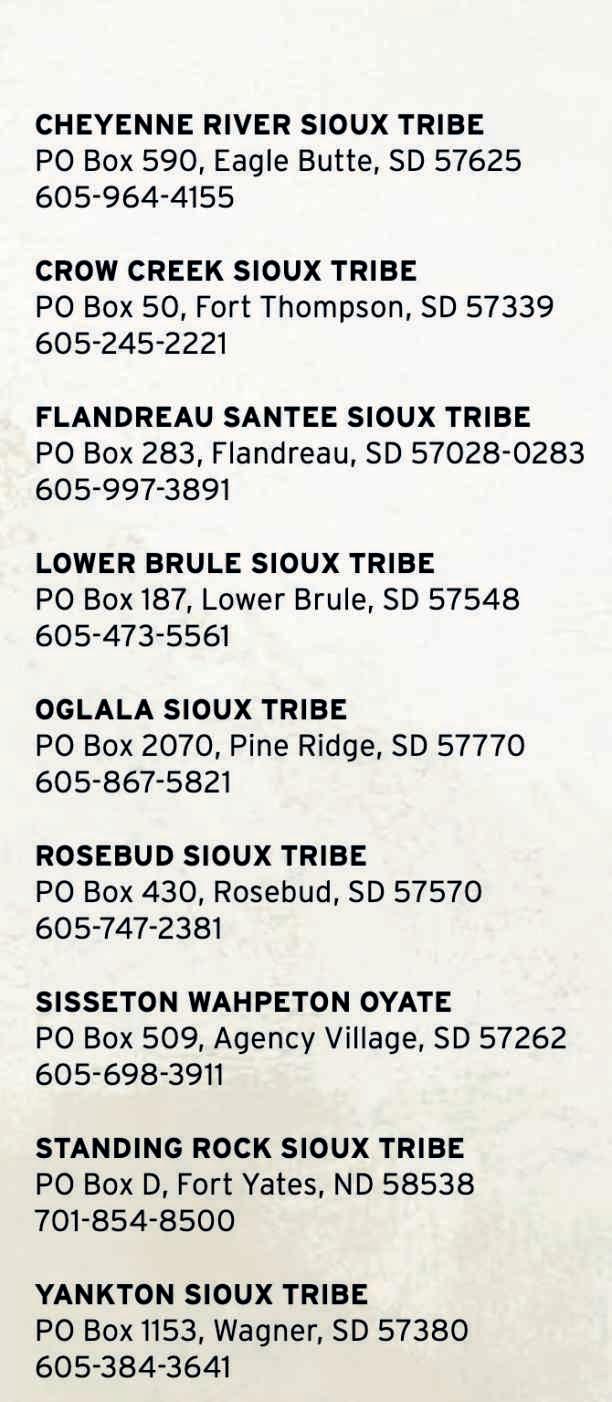
2 minute read
NATIVE TOURISM
Native Tourism Alliance shines spotlight on tribal nation culture
Billy Gibson billy.gibson@sdrea.coop
Advertisement
Sure, many of the 15 million travelers who visit South Dakota each year may have marveled at the Mount Rushmore Memorial, snapped a selfie at Wall Drug or beheld the fast-moving waters in Falls Park.
But how many of them have witnessed the whirling splendor of a wacipi, the traditional Native American celebration of life? How many have paused to watch a Native artist crafting a colorful piece of beaded jewelry?
Several years ago, a blind spot was noticed in the Department of Tourism’s efforts to attract visitors – not much attention was being focused on the state’s nine federally-recognized tribal nations.
In an effort to address that oversight, the department teamed up with the George Washington University International Institute of Tourism Studies and the tribes to develop a sustainable indigenous tourism industry by letting visitors know there are many points of interest available for exploration far beyond the beaten paths.
The five-year plan has been described as a “groundbreaking endeavor” and is one of the first initiatives of its kind under the Native American Tourism and Improving Visitor Experience (NATIVE) Act and was unveiled in August of 2021. More than 60 state, local and federal organizations collaborated to formulate the strategy as a catalyst for economic growth.
“I think the Alliance is a potential revenue source for our tribes, and it’s a way for us to generate income, alleviate poverty and help conserve our natural resources and culture,” said Dew Bad Warrior-Ganje, a member of the Cheyenne River Sioux Tribe.
The plan identified five guiding principles:
• Unity - Reunification of the Očhéthi Šakówi Oyate through shared history, commonalities, and collaboration on developing regional tourism.
• Preservation - Promotion of art and culture in order to enhance self-identity and pride as well as preserve the culture, including language and traditional knowledge.
• Woksape - Recognition of Elders as the driving force of traditional knowledge and wisdom in the development of regional tourism and educating the youth to be stewards of the language and culture.
• Education - Creation of cross-cultural bridges and educating the World about Native American communities.
• Self-sufficiency - Development of opportunities for Tribal Nations to become self-sufficient and create pathways to enhance livelihood.
Organizers gathered together and developed detailed goals and methods to achieve those goals. Planners were forced to start from the ground floor as not much data existed to determine the present status of Indigenous tourism.
They initially identified a “rich mix” of 145 existing natural, cultural and heritage attractions and special events to promote, in addition to potential agritourism initiatives.
Nearing the halfway point in the plan’s prescribed timetable, stakeholders report substantial progress and greater interest from visitors seeking an authentic cultural experience.
Calvin Bloemendaal, who has represented the South Dakota Department of Tourism in the Alliance from its inception, pointed out several specific measures of success.
Chief among them is the creation of a nine-day motorcoach tour of tribal territory that starts in Rapid City and terminates in Bismarck. The tour, coordinated with assistance by the tourism department, will begin this summer and will be operated through Destination America and Trafalgar Tours.
“It’s one of the first tours of its kind,” Bloemendaal said. “Destination America caters to an upscale clientele of individuals who like to travel a lot and have been to a lot of places. They’re looking for something unique and interesting they haven’t seen before.”
He also mentioned the progress that has been made in building a network of support for tribal tourism and the development of themed destination experiences.
There’s also a marketing guide that is part of the department’s general ongoing promotional efforts. More than 30,000 of the helpful guides were printed and are being distributed at visitor centers, trade shows and other industry events.
“I was at a trade show in Denver and people were extremely interested in this idea and gravitating toward it. The guide is an effective tool that inspires people to visit,” he said. “We’re making a lot of headway as far as putting together pitches and itineraries to attract more tour operators to the state.”








